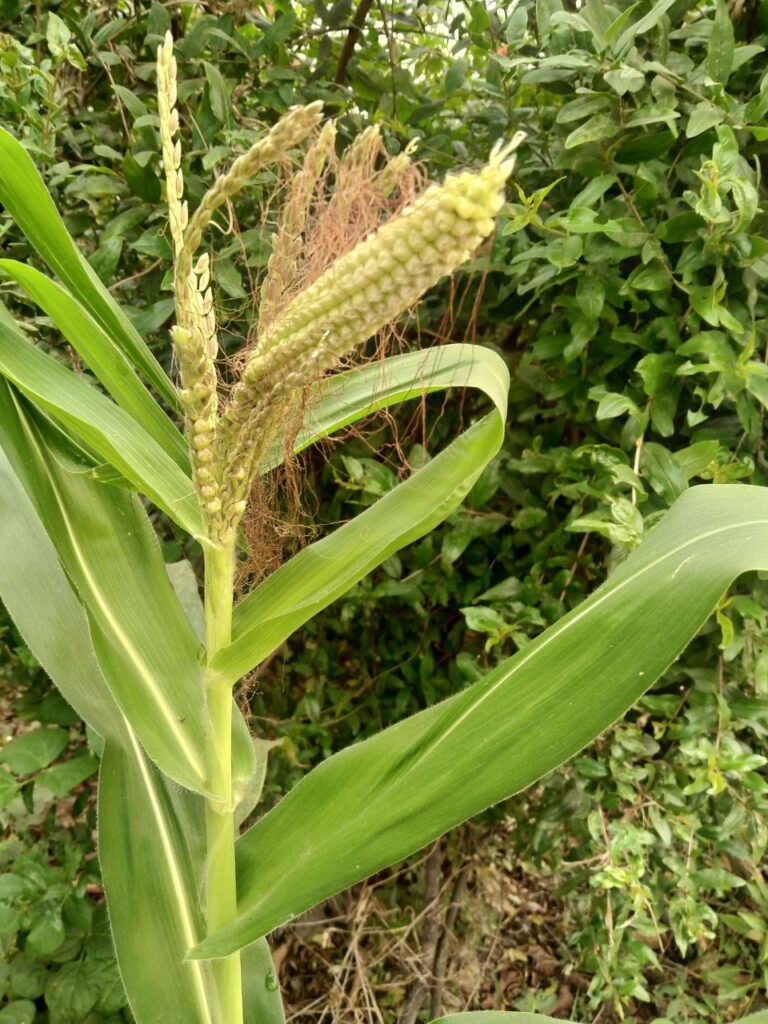
Sometimes we may have seen some unusual structure in a maize plant where some kernel is produced on the tassel part; such a condition is known as tassel-ears in corn.
Tassel ears are the common term for a tassel that has produced a limited number of kernels and maintains components of both the reproductive structures.
Tassel ears are basically unusual and rare traits of maize. It is considered to be a developmental trait affected by a specific environment and hormonal imbalance. Specific genetic mutations can also lead to the development of tassel-ears.
In fact, Maize has a male flower in tassel and female flower in ears and typically it forms a monoecious plant. However both tassel and ears are bisexual in nature and soon after each reproductive structure has initiated, the male components (stamens) in ear is aborted and in the tassel, the female organ (gynoecia) is aborted leading to exclusively male and female organs in the tassel and ears, respectively. In wild progenitors of maize (teosinte), both tassel and ears are born on the same inflorescence.
Occasionally, some female flower parts survive and develop on the tassel, leading to the formation of individual kernels or partial ears in the place of all or parts of the tassel.
Tassel-ears often form on tillers when the growing point is damaged or destroyed by factors such as hail, frost, flooding, herbicides, or mechanical injury.

Certain hybrids may be more likely to produce tillers under specific environmental conditions, and these tillers can develop tassel-ears. This phenomenon is frequently observed along the edges of fields where soil is compacted or saturated, or where planting density is very low. Low planting density promotes tillering which may result in occurrence of tassel-ears.
It is very rare to find tassel-ears on the main stalk of a corn plant. The tassel-ears develop without covering husk and without a protective husk, the kernels that form on tassel-ears are vulnerable to weather damage and predation by birds. As a result, harvestable, high-quality grain from tassel-ears is uncommon.
However , Tassel-ears do not affect yield or corn health, as most plants that produce tassel-ears also have healthy monoecious flowers that develop into normal ears.
